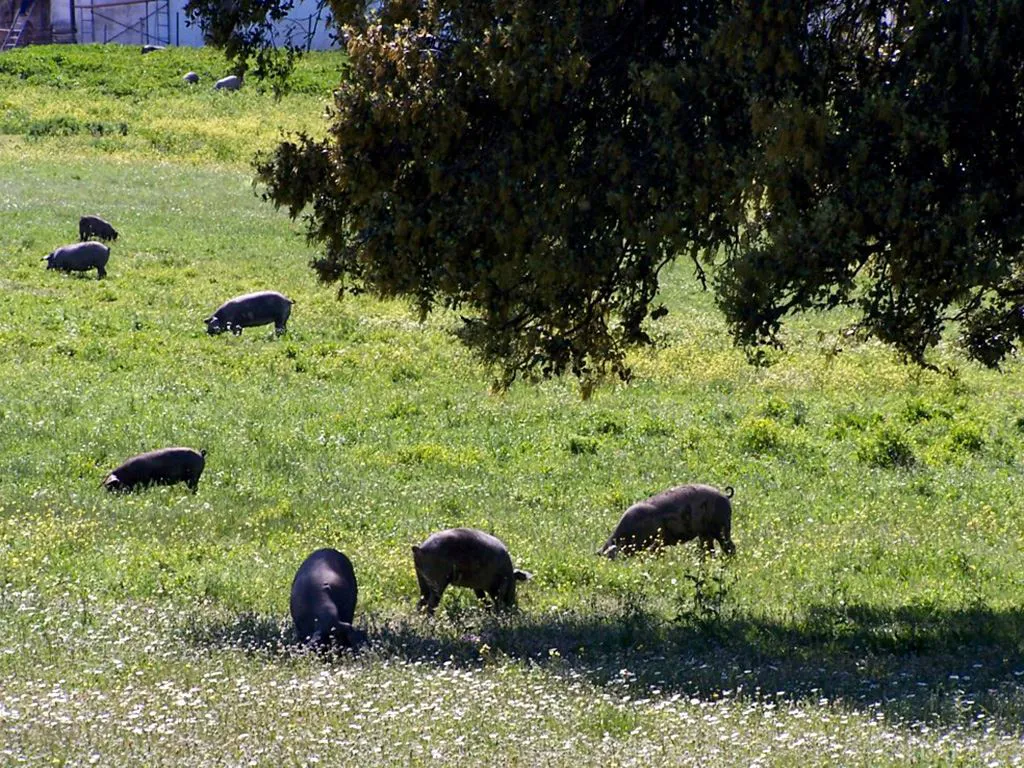Few tourists make it to the Sierra Norte de Sevilla Parque Natural due to its remoteness but the ones that do take the trouble are wowed with the small white villages
By Nick Nutter | Updated 20 Sep 2022 | Seville | Parks |
Login to add to YOUR Favourites or Read Later


Cascadas de Hueznar
Few tourists make it into this park due to its remoteness but the ones that do take the trouble are wowed with the small white villages, typically Moorish, with steep winding streets leading to a castle or church. The gently rolling, wooded, slate hills with occasional outcrops of granite and limestone, provides one of the most diverse landscapes in Andalucia and makes the Sierra Norte de Sevilla Natural Park a worthy member of the European Geoparks network.


Cerro del Hierro
The main watercourse through the Sierra Norte de Sevilla Natural Park is the Rio Huéznar. The river runs underground from Guadalcanal to emerge at the Cascadas de Huéznar near San Nicolás del Puerto. The waterfalls have been declared a natural monument. Guadalcanal is the northernmost settlement on the edge of the park. It is a pretty village with several Mudéjar churches and a ruined medieval castle and walls. The Rio Huéznar is the only river in the Sierra Morena with a trout population.


Iron Mountain
The names of some of the towns reveal the mining history of the area. Just south of the park is Villanueva del Río y Las Minas, where a large coalfield has been exploited. Near San Nicolás del Puerto, El Cierro is a huge limestone outcrop with rich veins of iron that have been mined for hundreds of years whilst the silver deposits of Almadén de la Plata have been known since Roman times.


Constantina
The whole park is a landscape of rolling hills with evergreen oaks. The higher levels, with abundant water, are a gallery of alders, a tangle of brambles and wild cherry and hazelnut trees. However, the most remarkable landscape feature of the park is the dehesa, a mixed pasture – woodland area that has been created and tended by humans since the Neolithic period. The dehesa is where farmers graze their animals - mainly black and brown Iberian pigs that eat the fallen acorns and cattle that graze on the lush grass while the oak trees produce cork and charcoal, thereby taking full advantage of the pasture. In 2002 the park became part of the Unesco biosphere reserve of Dehesas de la Sierra Morena.


Dehesa in Sierra Norte de Sevilla
The landscape and remoteness encourage animals and birds to make the Sierra Norte de Sevilla their home. Otters feast on the trout in the Rio Huéznar and wild boar live in the forests. Deer are abundant as are rabbit, foxes, genets, Egyptian mongooses, badgers, polecats and wild cats. Birds likely to be spotted include; short-toed eagles and griffon vultures, the endangered black vulture, imperial eagle and black stork, red kites, Bonelli's eagles and eagle owls. In the woodland areas you may see azure-winged magpies, golden orioles and hawfinches.


Rio Hueznar
To appreciate the park, visitors should make their way to the main centre, Cazalla de la Sierra via the information centre at El Robledo, near Constantina. The grounds of the centre have a botanical garden that features the plants to be found in the park. The centro de interpretacion has a large collection of maps and information about the activities available in the park from walking and cycling to horse riding, trout fishing and canoeing.
Near Cazalla de la Sierra are the Cuevas de Santiago, inhabited since the Stone age, they are a labyrinth of passages and caverns. Cueva de los Covaches near Almadén de la Plata is a series of limestone caverns, the second largest in Seville province, and a site of cultural interest with Neolithic cave paintings and artefacts dating to the Bronze Age.
In 2015, the Sierra Norte de Sevilla Parque Natural was declared a UNESCO Global Geopark. Here you will find the 700 million year story of this western part of the Iberian Peninsula.
The Geopark’s rich geological, archaeological and mining history has resulted in the recognition of at least 32 sites of geological interest including:
The karst and mine complex at El Cerro del Hierro Natural Monument: a spectacular paleo-karst which originated from Middle-Upper Cambrian erosion of Lower Cambrian limestone.
The Valley Syncline, with Ordovician to Devonian sedimentary rocks and an abundance of pelagic fossil species.
A site containing the highest concentration of impressions of Lower Cambrian jellyfish recorded in the Iberian Peninsula.
The crag-land landscapes in the Geopark’s abundant igneous rock outcrops.
The “Beja-Acebuches” amphibolites interpreted as the remains of an ancient ocean floor, and a suture between tectonic plates.
Permian and the Triassic rocks which represent the filling of post-orogenic continental basins.
The waterfalls and travertine deposits in the Hueznar River.
Mines and quarries, with over 30 ancient and recent mines.